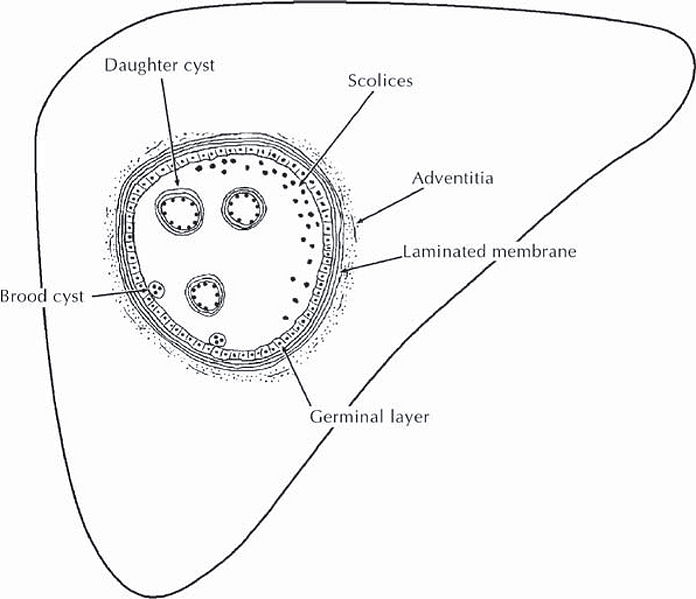
The term hydatid disease describes infection with the larval stage of the cestode (or tapeworm) Echinococcus species. Transmission is from eggs found in faeces of dogs and accidentally swallowed, usually by children. Larvae develop over many years to form fluid-filled cysts in various organs, particularly the liver. Cysts can grow to considerable size and contain a large amount of fluid and vast numbers of infectious scolices (daughter worms).
There are currently no effective drugs or vaccines to protect humans against the disease.
Treatment of these cysts is usually aspiration and de-roofing with great care not to rupture them. Multiple maneuvers are done to protect the surrounding tissues during the procedure. The procedure can be done open or laparoscopic depending on location and accessibility. In certain situations especially if multiple on one side of the liver, it may require liver resection of that side.

